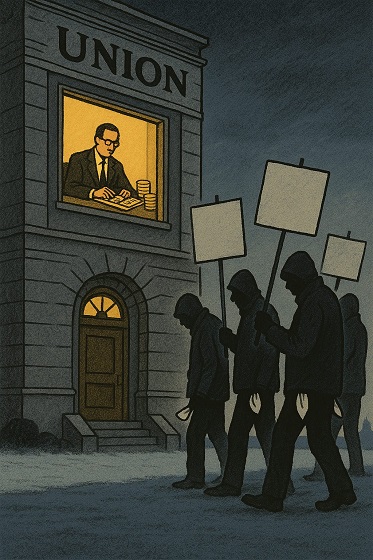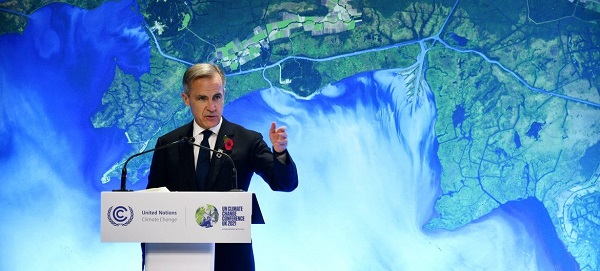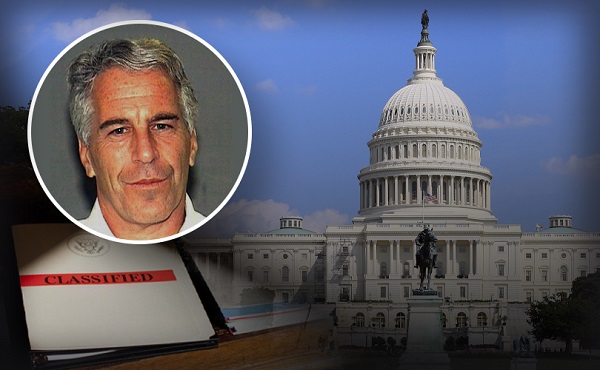Brownstone Institute
The High Stakes in the Legal Battle for Free Speech
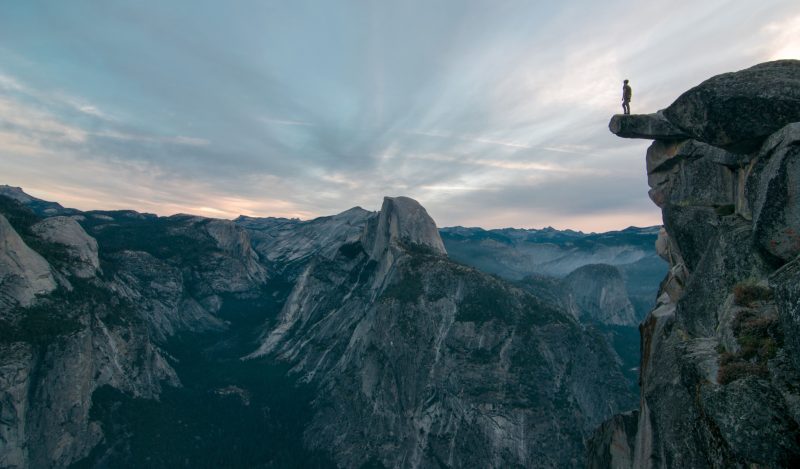
BY
The ongoing war between the US Security State and the First Amendment is perhaps the most underreported development of the 21st century. Now, Missouri v. Biden may bring it to the Supreme Court.
Just two decades ago, the internet promised liberation as dictatorships would cave to the emerging swell of information. That was the hope, at least.
“There’s no question China has been trying to crack down on the internet,” President Clinton said in 2000. “Good luck. That’s sort of like trying to nail Jell-O to the wall.”
That optimism did not come to fruition. Instead of Westernizing the Orient, technology laid the foundation for the US Security State to pursue unprecedented social control.
At first, the conflict appeared to be between rank-and-file military members and transgressive cyber actors. Julian Assange and Edward Snowden seemed like mere hackers, not harbingers for the impending suspension of American liberty.
The battle suddenly became a civilizational struggle in 2020. A highly efficient technocracy declared war against the Bill of Rights. The US Security State shut down American society, eradicated due process, and captured the public health apparatus. The CIA bribed scientists to cover up the origins of Covid, and the Department of Homeland Security dictated what Americans could and could not see in their newsfeeds. The FBI helped banish the country’s oldest newspaper from Twitter for reporting on its preferred candidate’s son.
When Clinton made his “Jell-O” comment, few of us could imagine that we’d live in such a country. We trusted our courts and our elected government to protect us. We thought the rule of law was sacrosanct. We were wrong.
Now, however, the judiciary has the opportunity to reclaim the First Amendment from the tyranny of the Security State in Missouri v. Biden.
Missouri v. Biden and the CISA Injunction
Tuesday, the Fifth Circuit reinstated an injunction against CISA, an agency in the Department of Homeland Security, that prohibits its agents from colluding with social media companies to promote censorship of any kind.
The case demonstrates how far the United States has strayed from its former free speech ethos. CISA held ongoing meetings with social media platforms to “push them to adopt more restrictive policies on censoring election-related speech,” according to the Fifth Circuit. This included criticism of lockdowns, vaccines, and the Hunter Biden laptop. Through a process known as “switchboarding,” CISA officials dictated to Big Tech platforms what content was “true” or “false,” which became Orwellian euphemisms for acceptable and prohibited speech.
CISA’s leaders reveled in their usurpation of the First Amendment. They overturned hundreds of years of free speech protections, appointing themselves the arbiters of truth. Without freedom of “election-related speech,” we no longer live in a democracy. They pursued a faceless dictatorship.
They sought to eradicate dissent surrounding the policies that they imposed. CISA had been responsible for dividing the workforce into categories of “essential” and “nonessential” in March 2020. Hours later, the order became the basis for the country’s first “stay-at-home” order, a process that quickly spiraled into a previously unimaginable assault on Americans’ civil liberties.
CISA betrayed the country’s founding principle. A group of unelected bureaucrats hijacked American society without ever having a vote cast in their names. They disregarded the First Amendment, due process, and elected government in their pursuit of power.
The Framers understood that liberty relied on the free flow of information. They were well aware of the dangers of widespread lies and an incendiary press corps, but tyranny presented a far greater risk to society. Government could not be trusted to wield power over the minds of men, so they enshrined freedom of press, worship, and speech in our Constitution.
The Security State unwound those liberties. White House officials used the power of the federal government to suppress dissent. The Biden Administration launched an interagency attack on free speech. The Covid regime’s coup d’etat continued unimpeded until Judge Terry Doughty’s July 4 injunction.
Now, the Fifth Circuit has remedied its previous error by reinstating the injunction against CISA. The case may now head to the Supreme Court, where the Justices would have the opportunity to dismantle the technocratic censorship operation at the heart of the Covid response.
The war is far from won. Julian Assange remains in jail alongside terrorists for publishing news reports that undermined the Security State’s deceit surrounding the War on Terror. Edward Snowden is banished from his homeland for exposing the lies of James Clapper.
President Biden’s “misinformation” crusade shows no signs of retreat entering the 2024 election cycle. Social media is still censored. Your Google results are still gamed at the behest of powerful state actors. YouTube has proudly announced that it will censor content based on the diktats of the World Health Organization. Say the wrong thing on LinkedIn and you are toast.
Among the large players, only X, formerly known as Twitter, is eschewing routine takedowns of speech deemed oppositional to regime priorities. That is truly only because one man had the means to buy and the drive to liberate it from the Censorship Industrial Complex, for now.
Tuesday’s decision reaffirmed what the Supreme Court called the “bedrock principle underlying the First Amendment” in 1989: “that the government may not prohibit the expression of an idea simply because society finds the idea itself offensive or disagreeable.”
Rebuilding from the wreckage of Covid will require reclaiming those fundamental pillars of American society. The freedom to speak was not the first right earned by a people in revolt against ancient-world forms of statism but it might be the most essential. That’s why it is instantiated in the very first amendment to the Bill of Rights.
If the regime can control the public mind, they can control everything else too. A loss here is a loss everywhere.
Brownstone Institute
Bizarre Decisions about Nicotine Pouches Lead to the Wrong Products on Shelves

From the Brownstone Institute
A walk through a dozen convenience stores in Montgomery County, Pennsylvania, says a lot about how US nicotine policy actually works. Only about one in eight nicotine-pouch products for sale is legal. The rest are unauthorized—but they’re not all the same. Some are brightly branded, with uncertain ingredients, not approved by any Western regulator, and clearly aimed at impulse buyers. Others—like Sweden’s NOAT—are the opposite: muted, well-made, adult-oriented, and already approved for sale in Europe.
Yet in the United States, NOAT has been told to stop selling. In September 2025, the Food and Drug Administration (FDA) issued the company a warning letter for offering nicotine pouches without marketing authorization. That might make sense if the products were dangerous, but they appear to be among the safest on the market: mild flavors, low nicotine levels, and recyclable paper packaging. In Europe, regulators consider them acceptable. In America, they’re banned. The decision looks, at best, strange—and possibly arbitrary.
What the Market Shows
My October 2025 audit was straightforward. I visited twelve stores and recorded every distinct pouch product visible for sale at the counter. If the item matched one of the twenty ZYN products that the FDA authorized in January, it was counted as legal. Everything else was counted as illegal.
Two of the stores told me they had recently received FDA letters and had already removed most illegal stock. The other ten stores were still dominated by unauthorized products—more than 93 percent of what was on display. Across all twelve locations, about 12 percent of products were legal ZYN, and about 88 percent were not.
The illegal share wasn’t uniform. Many of the unauthorized products were clearly high-nicotine imports with flashy names like Loop, Velo, and Zimo. These products may be fine, but some are probably high in contaminants, and a few often with very high nicotine levels. Others were subdued, plainly meant for adult users. NOAT was a good example of that second group: simple packaging, oat-based filler, restrained flavoring, and branding that makes no effort to look “cool.” It’s the kind of product any regulator serious about harm reduction would welcome.
Enforcement Works
To the FDA’s credit, enforcement does make a difference. The two stores that received official letters quickly pulled their illegal stock. That mirrors the agency’s broader efforts this year: new import alerts to detain unauthorized tobacco products at the border (see also Import Alert 98-06), and hundreds of warning letters to retailers, importers, and distributors.
But effective enforcement can’t solve a supply problem. The list of legal nicotine-pouch products is still extremely short—only a narrow range of ZYN items. Adults who want more variety, or stores that want to meet that demand, inevitably turn to gray-market suppliers. The more limited the legal catalog, the more the illegal market thrives.
Why the NOAT Decision Appears Bizarre
The FDA’s own actions make the situation hard to explain. In January 2025, it authorized twenty ZYN products after finding that they contained far fewer harmful chemicals than cigarettes and could help adult smokers switch. That was progress. But nine months later, the FDA has approved nothing else—while sending a warning letter to NOAT, arguably the least youth-oriented pouch line in the world.
The outcome is bad for legal sellers and public health. ZYN is legal; a handful of clearly risky, high-nicotine imports continue to circulate; and a mild, adult-market brand that meets European safety and labeling rules is banned. Officially, NOAT’s problem is procedural—it lacks a marketing order. But in practical terms, the FDA is punishing the very design choices it claims to value: simplicity, low appeal to minors, and clean ingredients.
This approach also ignores the differences in actual risk. Studies consistently show that nicotine pouches have far fewer toxins than cigarettes and far less variability than many vapes. The biggest pouch concerns are uneven nicotine levels and occasional traces of tobacco-specific nitrosamines, depending on manufacturing quality. The serious contamination issues—heavy metals and inconsistent dosage—belong mostly to disposable vapes, particularly the flood of unregulated imports from China. Treating all “unauthorized” products as equally bad blurs those distinctions and undermines proportional enforcement.
A Better Balance: Enforce Upstream, Widen the Legal Path
My small Montgomery County survey suggests a simple formula for improvement.
First, keep enforcement targeted and focused on suppliers, not just clerks. Warning letters clearly change behavior at the store level, but the biggest impact will come from auditing distributors and importers, and stopping bad shipments before they reach retail shelves.
Second, make compliance easy. A single-page list of authorized nicotine-pouch products—currently the twenty approved ZYN items—should be posted in every store and attached to distributor invoices. Point-of-sale systems can block barcodes for anything not on the list, and retailers could affirm, once a year, that they stock only approved items.
Third, widen the legal lane. The FDA launched a pilot program in September 2025 to speed review of new pouch applications. That program should spell out exactly what evidence is needed—chemical data, toxicology, nicotine release rates, and behavioral studies—and make timely decisions. If products like NOAT meet those standards, they should be authorized quickly. Legal competition among adult-oriented brands will crowd out the sketchy imports far faster than enforcement alone.
The Bottom Line
Enforcement matters, and the data show it works—where it happens. But the legal market is too narrow to protect consumers or encourage innovation. The current regime leaves a few ZYN products as lonely legal islands in a sea of gray-market pouches that range from sensible to reckless.
The FDA’s treatment of NOAT stands out as a case study in inconsistency: a quiet, adult-focused brand approved in Europe yet effectively banned in the US, while flashier and riskier options continue to slip through. That’s not a public-health victory; it’s a missed opportunity.
If the goal is to help adult smokers move to lower-risk products while keeping youth use low, the path forward is clear: enforce smartly, make compliance easy, and give good products a fair shot. Right now, we’re doing the first part well—but failing at the second and third. It’s time to fix that.
Addictions
The War on Commonsense Nicotine Regulation

From the Brownstone Institute
Cigarettes kill nearly half a million Americans each year. Everyone knows it, including the Food and Drug Administration. Yet while the most lethal nicotine product remains on sale in every gas station, the FDA continues to block or delay far safer alternatives.
Nicotine pouches—small, smokeless packets tucked under the lip—deliver nicotine without burning tobacco. They eliminate the tar, carbon monoxide, and carcinogens that make cigarettes so deadly. The logic of harm reduction couldn’t be clearer: if smokers can get nicotine without smoke, millions of lives could be saved.
Sweden has already proven the point. Through widespread use of snus and nicotine pouches, the country has cut daily smoking to about 5 percent, the lowest rate in Europe. Lung-cancer deaths are less than half the continental average. This “Swedish Experience” shows that when adults are given safer options, they switch voluntarily—no prohibition required.
In the United States, however, the FDA’s tobacco division has turned this logic on its head. Since Congress gave it sweeping authority in 2009, the agency has demanded that every new product undergo a Premarket Tobacco Product Application, or PMTA, proving it is “appropriate for the protection of public health.” That sounds reasonable until you see how the process works.
Manufacturers must spend millions on speculative modeling about how their products might affect every segment of society—smokers, nonsmokers, youth, and future generations—before they can even reach the market. Unsurprisingly, almost all PMTAs have been denied or shelved. Reduced-risk products sit in limbo while Marlboros and Newports remain untouched.
Only this January did the agency relent slightly, authorizing 20 ZYN nicotine-pouch products made by Swedish Match, now owned by Philip Morris. The FDA admitted the obvious: “The data show that these specific products are appropriate for the protection of public health.” The toxic-chemical levels were far lower than in cigarettes, and adult smokers were more likely to switch than teens were to start.
The decision should have been a turning point. Instead, it exposed the double standard. Other pouch makers—especially smaller firms from Sweden and the US, such as NOAT—remain locked out of the legal market even when their products meet the same technical standards.
The FDA’s inaction has created a black market dominated by unregulated imports, many from China. According to my own research, roughly 85 percent of pouches now sold in convenience stores are technically illegal.
The agency claims that this heavy-handed approach protects kids. But youth pouch use in the US remains very low—about 1.5 percent of high-school students according to the latest National Youth Tobacco Survey—while nearly 30 million American adults still smoke. Denying safer products to millions of addicted adults because a tiny fraction of teens might experiment is the opposite of public-health logic.
There’s a better path. The FDA should base its decisions on science, not fear. If a product dramatically reduces exposure to harmful chemicals, meets strict packaging and marketing standards, and enforces Tobacco 21 age verification, it should be allowed on the market. Population-level effects can be monitored afterward through real-world data on switching and youth use. That’s how drug and vaccine regulation already works.
Sweden’s evidence shows the results of a pragmatic approach: a near-smoke-free society achieved through consumer choice, not coercion. The FDA’s own approval of ZYN proves that such products can meet its legal standard for protecting public health. The next step is consistency—apply the same rules to everyone.
Combustion, not nicotine, is the killer. Until the FDA acts on that simple truth, it will keep protecting the cigarette industry it was supposed to regulate.
-

 Business2 days ago
Business2 days agoCanada is failing dismally at our climate goals. We’re also ruining our economy.
-

 Health2 days ago
Health2 days agoCDC’s Autism Reversal: Inside the Collapse of a 25‑Year Public Health Narrative
-

 Health2 days ago
Health2 days agoBREAKING: CDC quietly rewrites its vaccine–autism guidance
-

 Alberta2 days ago
Alberta2 days ago‘Weird and wonderful’ wells are boosting oil production in Alberta and Saskatchewan
-

 Crime2 days ago
Crime2 days agoCocaine, Manhunts, and Murder: Canadian Cartel Kingpin Prosecuted In US
-

 Daily Caller2 days ago
Daily Caller2 days agoBREAKING: Globalist Climate Conference Bursts Into Flames
-
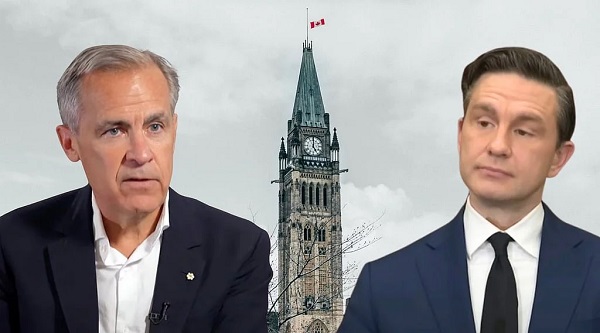
 Bruce Dowbiggin1 day ago
Bruce Dowbiggin1 day agoBurying Poilievre Is Job One In Carney’s Ottawa
-

 Energy2 days ago
Energy2 days agoThe Carney Government is Hijacking the Phase “Energy Superpower” to Advance Their Agenda








